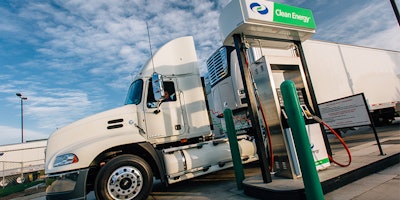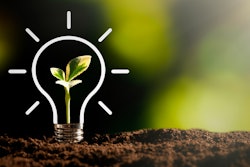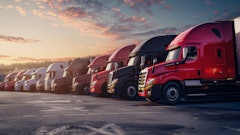
Whether the motivation to implement sustainability initiatives comes from government regulations, shareholder pressure or changing consumer demands, most corporations today have set goals around sustainability for their businesses.
As corporations set sustainability goals, they pursue a number of strategies to address reducing their footprint. Whether reducing their own emissions or reducing the emissions emitted from the energy products it sells, and companies begin offering more renewable energy sources, prioritizing land stewardship and addressing deforestation, among other initiatives.
These are strong examples for how companies can, and should, pursue sustainability across the various areas of their businesses. However, many of these goals have longer time horizons and require significant capital investment today. In the meantime, business leaders need to consider areas where they can make an immediate impact to start reducing their carbon footprint.
One area where corporate sustainability can find significant traction is in the transportation part of the supply chain.
Where the trucking industry goes green
In many ways the trucking industry provides the backbone for the American economy. Truck drivers help retailers stock their shelves, supply the gas stations and play a crucial role in moving food and beverage items through the chain. However, this critical piece of the U.S. supply chain comes with an environmental impact in the form of carbon emissions. The good news is that truckload transportation is an area where carbon reduction can be addressed in the near term in a capacity that benefits all industry participants.
Electric vehicles are usually the primary item that comes to mind in regard to how the trucking industry is addressing the issue of carbon emissions. Companies are investing in greener transportation. But, updating the technology for electric vehicles requires a significant capital investment. Additionally, there are infrastructure issues such as the lack of widespread charging stations along major trucking routes. This will need to be addressed in order for widespread adoption to occur. While the time horizon for these changes is significant, another area that dramatically drives down the industry’s carbon footprint today is increased network efficiency.
Empty trucks offer an opportunity for sustainability initiatives
Today, 30% of the trucks on American roads are driving empty. Meanwhile, shippers across the country are scrambling to find truck drivers to move their goods. This imbalance causes shippers to scramble for load coverage when there is a surplus of capacity.
This is due to the siloed nature of the industry.
The transportation industry historically operates across a series of silos, with each shipper having a limited number of carriers they work with to move their goods. This means that while there may be pockets of excess capacity within a single network, a shipper in need of a truck elsewhere in the industry cannot see or access that capacity. Moreover, even if a shipper can identify excess capacity from another area of the overall transportation market, the existing tools to secure that truck and fit it into their own transportation plan have not existed. But new technologies have largely mitigated this issue, even if they are not in widespread use.
New supply chain technologies offer a path to sustainability and cost reduction
With the explosion of logistics technology companies and initiatives in recent years, efforts have been made to advance the industry by providing new levels of connectedness and visibility across the industry. New companies have emerged to offer real-time freight tracking and supply chain visibility, while others have specialized in automating the outdated processes of communication by building digital freight brokerages and other digital intermediaries.
There has also been a new evolution in the transportation industry with technologies that support a fresh industry-wide networked approach that can help shippers unlock efficiencies and drive sustainability initiatives. While the industry has existed for many decades across a range of silos, these new tools are breaking down those silos so that shippers, carriers, brokers and other logistics providers can connect across a single network. This means that previously hidden capacity suddenly becomes available. Layered on top of this, new digital tools have made it possible for shippers to tap into that hidden capacity and reduce the number of empty miles driven by truck drivers today.
These miles are reduced through efficient circuits, round trips and other continuous moves that fill carriers’ empty miles. When this happens, shippers’ cost structures are lowered while carriers are simultaneously able to generate more revenue.
By reducing the number of empty miles driven, shippers can have a direct impact on reducing the overall excess CO2 emissions emitted by the industry. The good news is that this is something that can happen today, allowing large corporations to start tracking against their carbon reduction goals immediately. The new transportation planning solutions are able to directly track the number of CO2 emissions that are reduced with each shipper’s increased efficiency through tapping into the network to fill carriers’ empty miles.
For shippers, transportation network efficiency means they can both achieve their sustainability goals and lower their cost structure. It’s a formula that is both good for the environment and for their bottom lines.

















